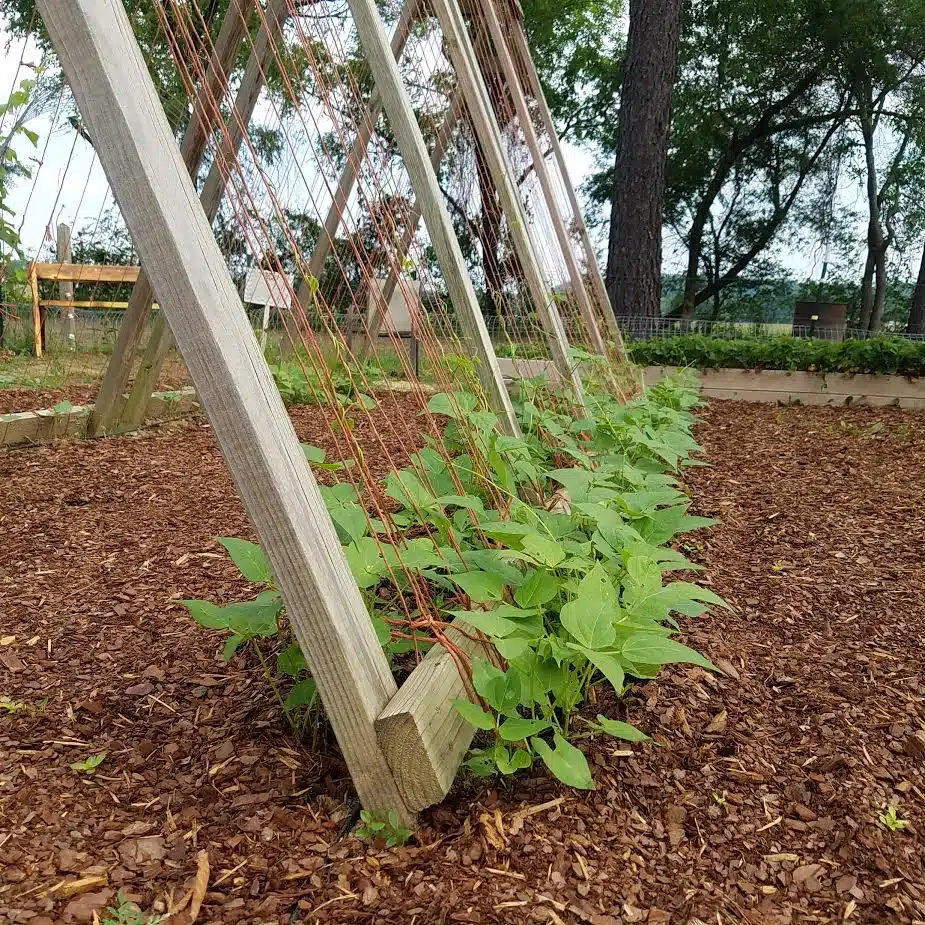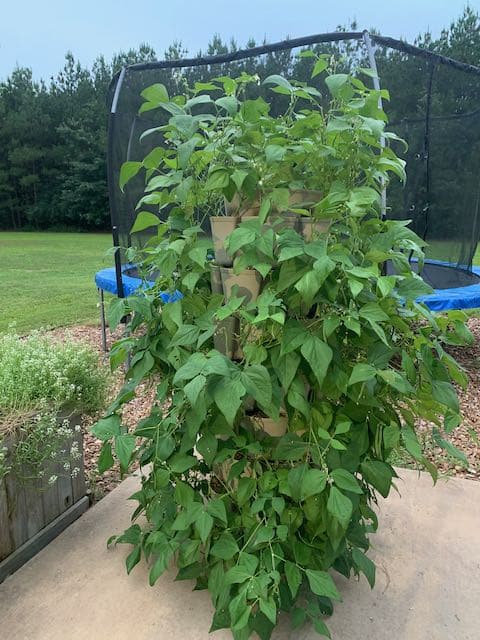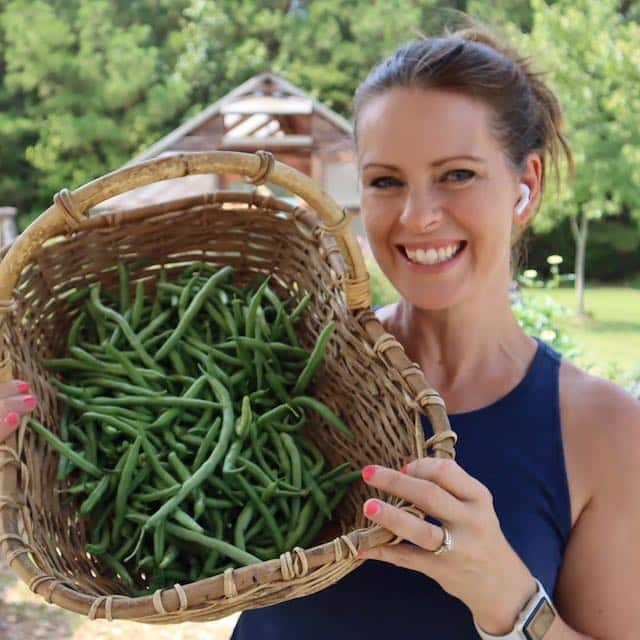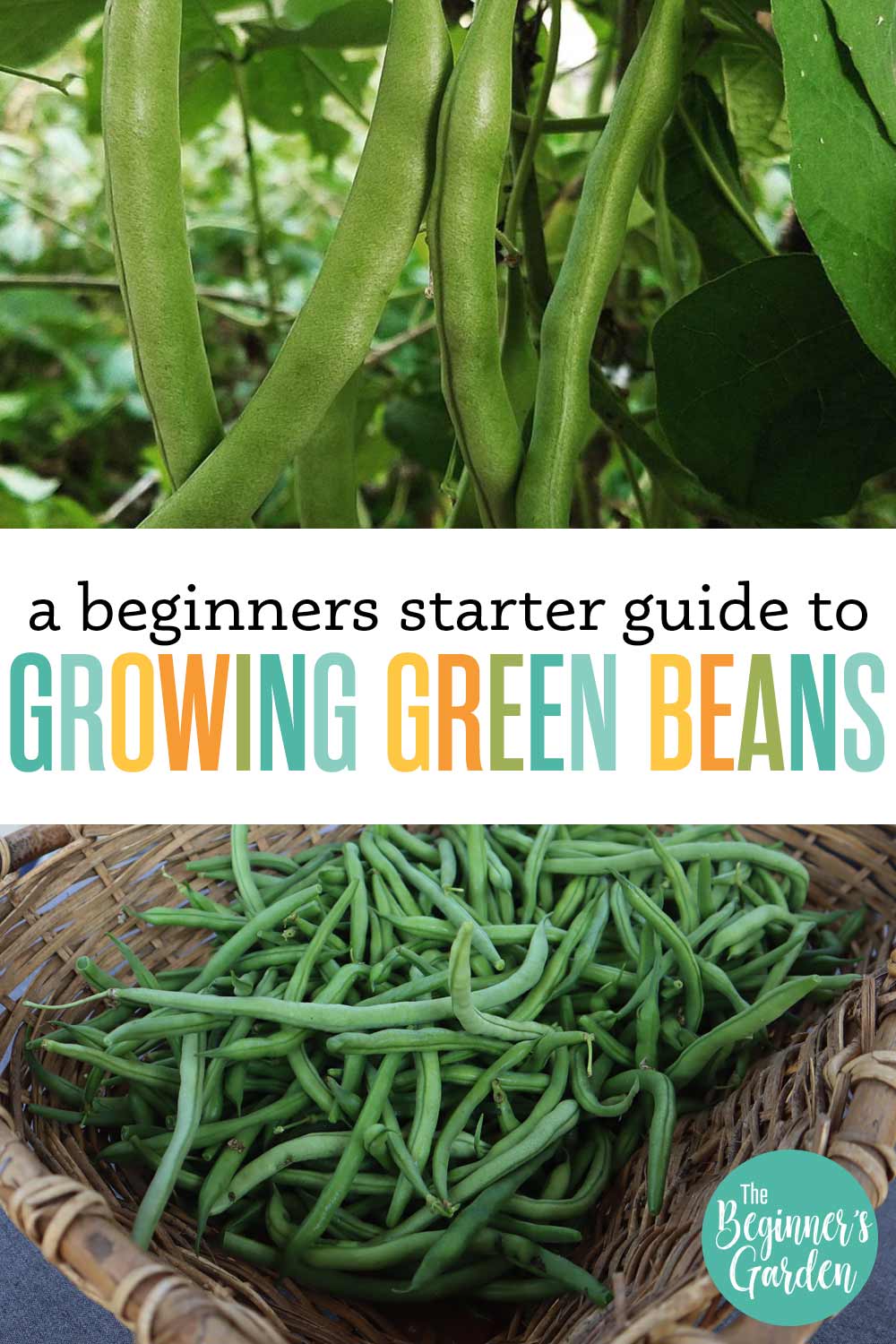How to Grow Green Beans: Beginner’s Starter Guide
Green beans can be a beautiful addition to your garden and are great for both fresh eating and preserving. You can either grow pole beans, which is a great way to begin adding in vertical gardening into your space, or bush beans, which will give you a faster harvest. Because green beans can grow in raised beds, in ground beds, or containers, they are a perfect fit for any vegetable garden.
When should you grow green beans?
Green beans prefer warm weather and cannot tolerate a frost. The seeds do not germinate well or grow in soil that is under 65 degrees. Waiting a week or two after your average last frost date is usually the best idea, but I will more often rely on taking the temperature of my soil to be certain. (To find my favorite soil thermometer, go to my Amazon storefront here.)
Green beans grow best in warm, but not necessarily hot, conditions. Pole beans in particular often will stop producing in high heat (over 90-95F), but don’t pull them out if this happens because once the weather comes down a bit, they will start to produce again. The high heat (95 degree days or above) almost presses pause on the plant but it will produce again in the late summer and early fall.
Bush beans, in my experience, will continue to produce in heat, but the yield will be lower. Afternoon shade can help.

What type of green beans should you grow?
Since we’ve started talking about pole beans and bush beans, let’s discuss the differences so you can choose the best type for you and your garden.
Pole Beans
Pole beans can grow up to 6-7 feet tall and need a trellis or support. They grow up the trellis by vining up what is nearby, and you don’t have to worry about training them.
Pole beans grow longer throughout the season and will continue to produce until a frost kills them. They do usually produce later in the season rather than earlier and will produce a greater quantity overall.
They are usually better suited for areas where pest pressure is heavy. While pests like bean beetles and grasshoppers do affect pole beans, often they will outgrow and outcompete these pests to still produce a great harvest.
I like to grow pole beans on my A-frame trellis for easy harvesting. To find a free printable download for how to build yourself a trellis like mine, click here.

Bush Beans
Bush beans are a more compact plant that only grow to around 12 inches tall and produce all their harvest at once. They produce earlier than pole beans and produce heavily for only a few weeks. Bush beans are a great option for succession planting because you can plant them and harvest them within a period of 2-3 months.
Also, if you want to preserve a lot of green beans at one time, bush beans are great to grow for a large harvest at once.
Many gardeners choose bush beans because the plants do not require a trellis or support.
(For more on pole beans vs. bush beans and how to decide which is right for you, read this article.)
Where should you grow green beans?
Green beans (pole & bush types) like well draining soil amended with organic matter like compost. They are not particularly hungry for extra fertilizer, and they don’t need an abundance of nitrogen because they produce their own.
They do need at least 6 hours of sunlight (although 8+ is bette), and consistent water. Watering is crucial especially when the plants start to set pods and during periods of hot weather. Speaking of heat, like we talked about earlier, the plants do not like to produce pods in the heat of the summer. The flowers that the plant does produce will not get pollinated correctly or the plant may not set flowers at all (this happens more with pole beans).

Planting Tips:
- Direct sow seeds after your last frost date (soil temp should be 65 degrees or higher)
- Plant about 1 inch deep or twice the depth of the seed (you can soak the seeds before planting but that depends on your soil saturation; it is not necessary)
- Add mulch when the plant is around 6 inches tall to conserve water and prevent weeds
- Can be planted in a ground bed, raised bed or container (if using a container, plant bush beans)
- Plant seeds every 3 inches and thin to one plant every 6 inches (especially with bush beans; pole beans can be planted closer together)
- Seedlings should emerge from the soil in about a week (can be less if soil is warmer)
- If growing in a Greenstalk Vertical Planter, choose a bush variety and plant 3 seeds per pocket. Use my code ‘JILL10‘ at checkout to get 10% off your order of $75 or more when you purchase using my affiliate link here.
Growing and Harvesting
Pests. One major thing to look out for with growing beans is all types of beetles. Covering your young plants with tulle or insect netting (the kind I use is listed here) can help allow the plant to get established before pests become a problem. Personally, I haven’t found even organic methods of pest control to be effective against beetles on my green bean plants.
Harvest. Ideally, you want to harvest the pods before you can feel the beans forming on the inside. The diameter of the pod should be around the size of a pencil or maybe a little thicker. The pod should still have a sheen to it when picked but if it is overripe (or has lost its sheen) then still harvest the pod from the plant so it doesn’t send all its energy into those pods. This will signal to the plant to create new pods.
One or two pods can be saved on the plant for seed saving if you desire. When you plan to prepare them (whether for canning or fresh eating) make sure to snap to desired length and de-string if needed.
Beginner Varieties to Grow
My favorite variety of pole beans is Blue Lake. I have several favorites when it comes to bush beans. Contender, Provider, and Blue Lake Bush have performed well, but my all time favorite is Jade. That’s why I put this variety in my Beginner’s Starter Pack with True Leaf Market. To find out more information on this packet and to purchase your own set, click here.

It’s always a good idea when selecting varieties to read the descriptions in the seed catalog to know what that type is best suited for. If you are looking for fresh eating, canning or freezing, different varieties are better suited for each outcome. Always ask for local recommendations from a garden center or nursery nearby. They will know the best type for your area and climate.
For more information on green beans and pest pressure, check out episode ‘256 – Green Beans: What Can Go Wrong?’ here.
Do you get overwhelmed with garden planning?

Subscribe here for my best tips to plan your garden in just 7 days -- all for FREE.
Plus, I'll send you my "In the Garden E-mail" on Fridays, periodic updates on garden resources relevant to you, and you'll receive access to my entire bank of free garden downloads!
You are also agreeing to our privacy policy.

